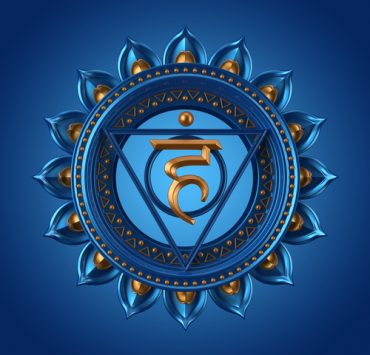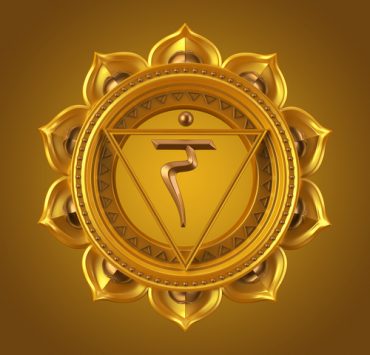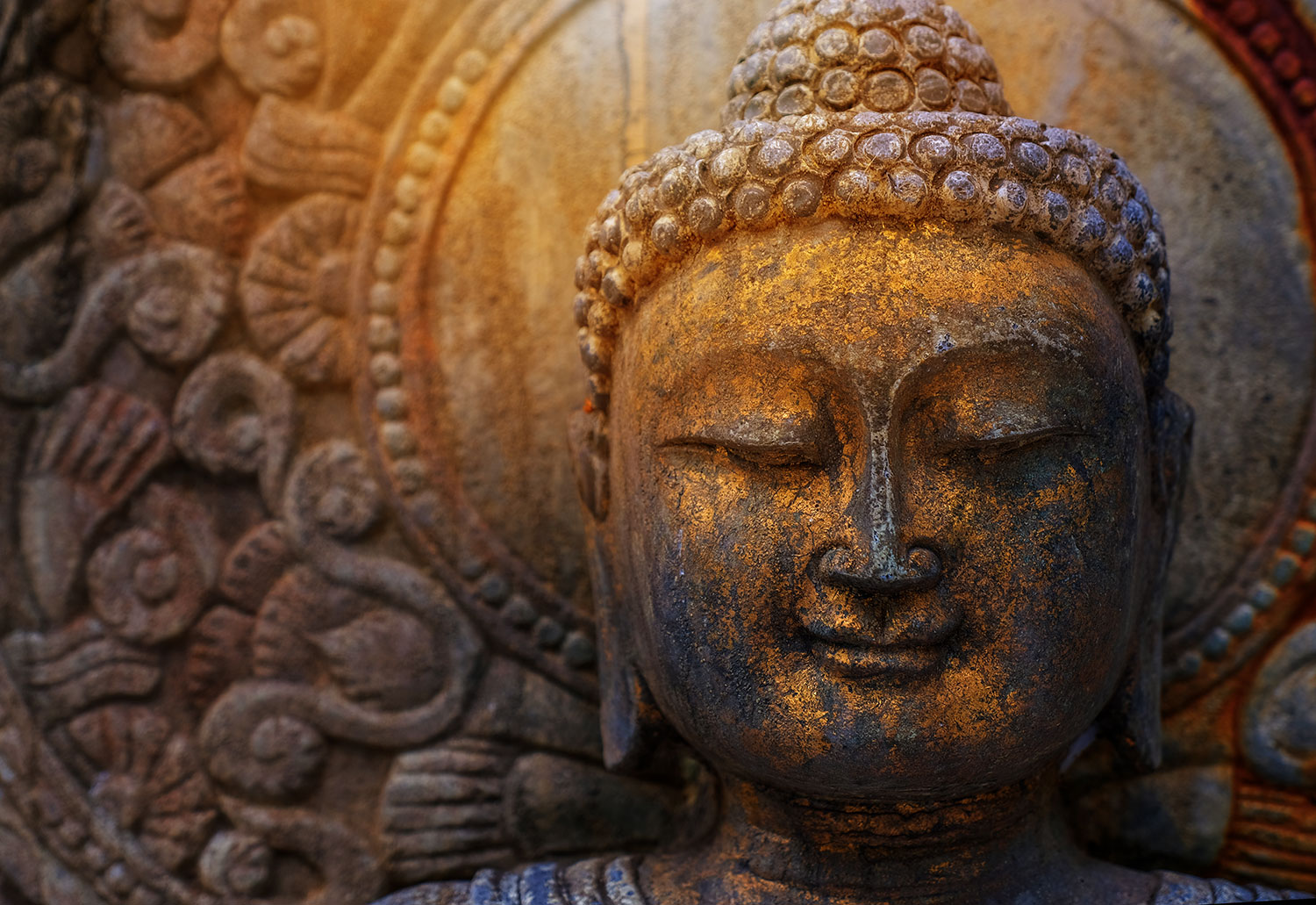
As a trained yoga professional and Ayurvedic practitioner, Donna goes…
Yogic symbols are a significant part of yogic traditions. But modern yoga has commercialized these symbols. The deeper meanings of these ancient sacred symbols must be explored.
This will allow for a more holistic yogic journey.
Some practitioners use symbols in their wardrobe or jewelry. They do this to express their love and dedication to yoga. But symbols are not just for decorative purposes.
Symbols allow one to cultivate a deeper knowledge of yogic philosophies.
Through symbols, one can gain insight into various teachings and mythologies. They are a powerful tool for understanding. And they can deepen your yoga practice.
Yogic symbols convey a visual concept. They can embody a teaching or spiritual idea. Using these concepts will enhance your yoga or meditation practice.
They can focus the mind and induce a state of contemplation and absorption.
What Are Yoga Symbols?
A symbol is a graphical representation of an idea. They can visually convey a concept or relationship. In this way, a symbol can create potent links between different concepts and experiences.
Symbols allow us to move from the unknown to the known.
Mystics from India created yoga symbols. They did so to elevate consciousness. These can bring insight into one’s spiritual path. Therefore, it is important to communicate with these deeper truths.
Use symbols to guide you towards achieving inner peace and enlightenment.
How to Use Yoga Symbols

Using symbols can enrich and deepen your yoga and meditation practice. You can have one or more symbols around your living or practice space.
This will help you obtain higher levels of inspiration and spiritual energy.
You can also try incorporating symbols into your wardrobe. You can wear decorative pieces or place them around your home. Having them closeby will elevate your practice. They can also boost your concentration, inner peace, and connection with the Divine.
Place one or more of these symbols in your practice space. Make a specific intention for utilizing them.
They can serve as a visual reminder to return to your intention. Whenever you see it, it will guide you back to where you want to be.
You can also place a symbol in front of you to focus on during meditation.
The Om/Aum Symbol
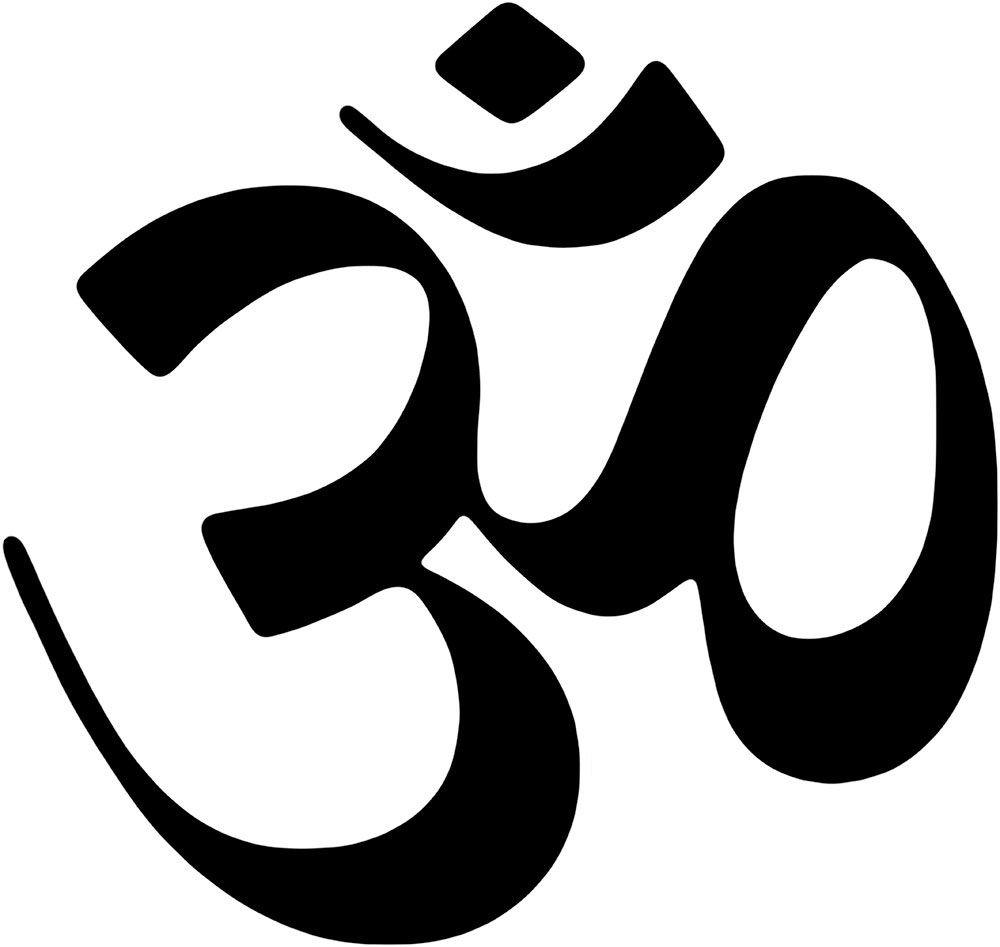
The om symbol is the most common symbol in yoga. It is included in the Vedas, the most ancient Hindu scriptures.
Om refers to the breath of the universe. It is believed to be the original sound.
In this way, Om unifies everything in the universe.
Some believe that chanting Om can open the third eye. Meditating on it can also connect one to the divine force of the universe. The image of om represents the primary goal of yoga.
It seeks to unite the mind, body, and spirit.
There are three different sounds of Om (A-U-M). These three sounds represent the aspects of Hindu Trimurti.
A represents Brahma, the creator. U represents Vishnu, the sustainer. And M represents Shiva, the transformer.
The Om symbol can be broken down into four various meanings.
- The bottom left curve represents the sound of A. It is the first or waking state of consciousness. The sound of A is the conscious mind. This is where we experience the world through our five senses.
- The bottom right curve represents the sound of U. It is the second dreaming state of consciousness. Here, we experience the world beyond our physical bodies. The sound of U is our active unconsciousness. It captures our energetic realms.
- The top left curve represents the sound of M. It is the third or deep sleeping state of consciousness. The sound of M represents the spiritual forces of the universe. It garners connectivity for all.
- The dot located at the top represents silence. It is the fourth samadhi state. This is our highest state of consciousness that is absolutely pure. Here, we can experience absolute stillness. Here, we are one with all creation.
The Lotus Flower
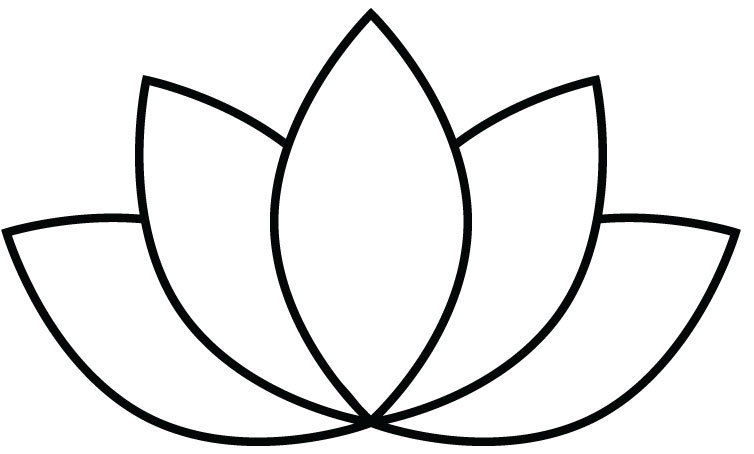
The lotus flower represents the womb of the universe. From this flower, all things are born.
An open lotus flower represents purity. It signifies enlightenment and new beginnings.
The lotus flower blooms on the surface of stagnant water. Its roots grow deep into the muddy bottom. This growth pattern symbolizes our ability to transform struggle into power. In this way, the lotus flower is us.
A closed lotus flower represents an un-enlightened yogi.
It signifies that the path towards enlightenment is shut off. The petals of the flower are compared to the heart. When the petals, or heart, are open, divinity is revealed.
The Hamsa
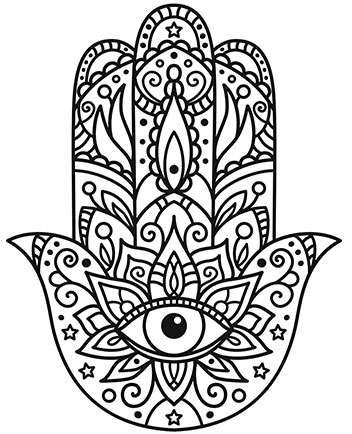
The Hamsa symbol is connected to a number of traditions. Today, it is a popular symbol for warding off evil and negativity.
This symbol is often found in jewelry and clothing.
The word “Hamsa” refers to the five fingers of the hand. It is believed to be a symbol of protection. This symbol can repel harm and bad energy.
Appropriately, it represents luck, good fortune, health, wealth, and fertility.
The Mandala
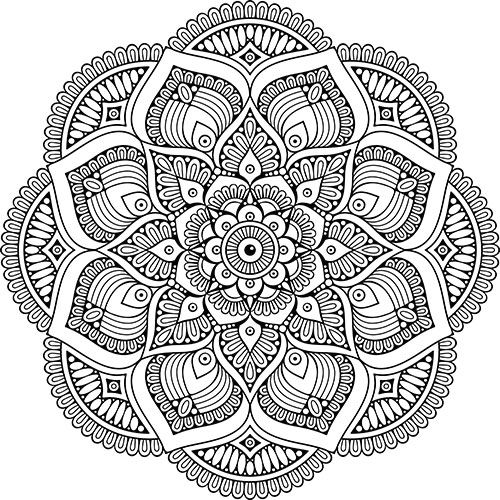
Mandala is a Sanskrit word that translates to “circle.” Mandalas are often symmetrical geometric patterns and shapes.
As a symbol, it represents wholeness, unity, and harmony.
The outer circles of a mandala symbolize the oneness of the universe. The inner layers represent the different levels of human existence.
Mandalas are used as a visual aid during meditation.
They help to focus the mind. They can also promote contemplation and create inner peace. The intricate designs of mandalas represent the world as well as one’s self-journey. The many layers illustrate the qualities needed to attain wisdom and reach enlightenment.
Buddhist monks make mandalas out of different colored sand. This symbolizes the impermanence of everything. It goes beyond the material world. In Hindu traditions, mandalas show the connection and trajectory between the material and the immaterial.
Overall, mandalas represent the harmony of the mind, body, and soul.
Image of Shiva
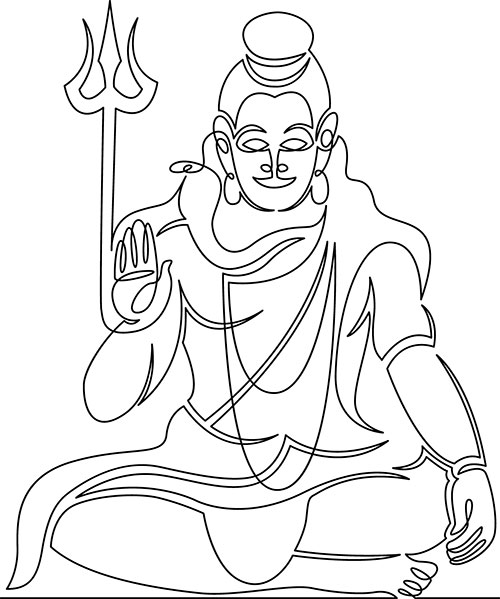
Shiva is one of the many Hindu gods. In yoga, Shiva is known as the “first-yogi.”
According to yogic teachings, Shiva entered enlightenment 15 thousand years ago. This occurred in the Himalayas. Upon reaching enlightenment, Shiva started an ecstatic dance. Then he became very still.
Shiva became the first guru by sharing knowledge with the human race.
Now, Shiva represents the possibility of raising beyond one’s present limitations.
Image of Buddha
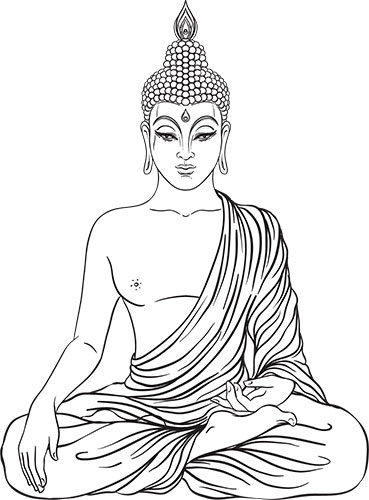
Siddartha Gautama, or the Buddha, lived during the 5th Century B.C.
His image represents enlightenment, oneness, and peace.
The image of the Buddha is one of the most popular symbols in Buddhism and in yoga. It signifies one’s ability to become awakened or enlightened through meditation. The Buddha liberated himself from worldly suffering and spiritual ignorance.
His image reminds us that we can do the same.
The Buddha can be thought of as one of the original yogis. He was, after all, a teacher that dispelled ignorance.
The Evil Eye

The evil eye symbol is related to the Hamsa symbol. It is a pervasive theme in Judaism, Islam, Hinduism, and Buddhism. The evil eye is even present in Greek and Roman cultures.
The idea of the evil eye is that someone is putting too much emphasis on you. They are paying too much attention to you.
This symbol dates back to the 6th Century B.C. Today, the evil eye is worn or displayed as a talisman. This symbol is believed to ward off any ill will from others.
The Chakras
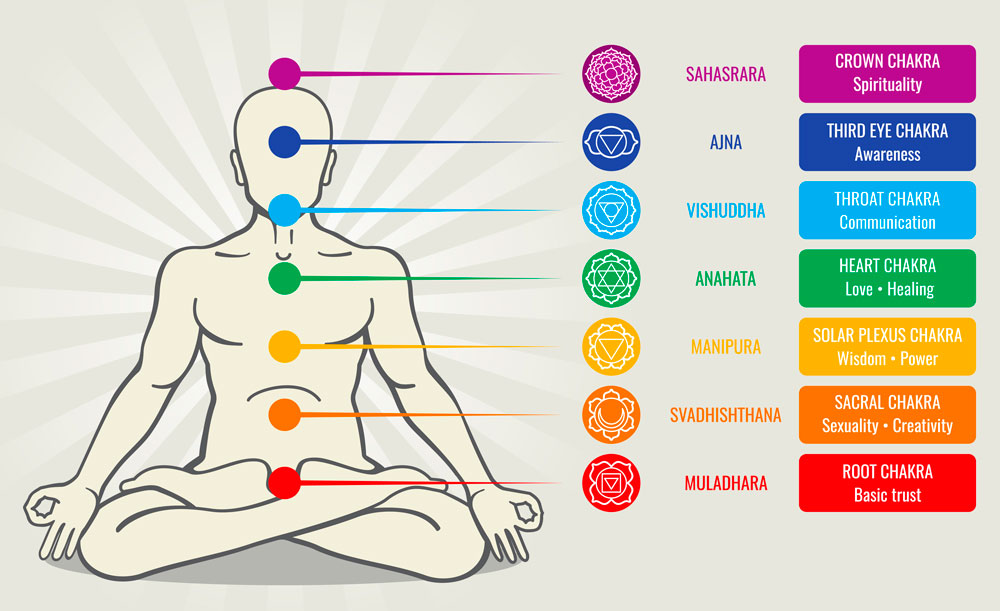
Like Om, the chakras are first mentioned in the Vedas. We all have lots of chakras in the body. There are seven main chakras that run up the spine. They start at the base of the spine and reach the top of the head.
The chakras can be thought of as the invisible body.
Imagine them as our spiritual circulation system with energy centers. When a chakra is blocked, it can cause various disruptions to one’s wellbeing.
The chakras represent seven energies in the body. They are described as whirling disks of light. If all seven energies are working in perfect harmony, one will be at peace.
This peace will be experienced spiritually, mentally, and physically.
One method of balancing the chakras is to meditate on them. By meditating on the meaning of each chakra, one can restore harmony.
The chakra icons are composed of lotus petals, triangles, colors, and circles. Some even include Sanskrit letters and other symbols.
#1 The Muladhara Chakra – Root Chakra
The Muladhara chakra is also our root chakra. Its symbol is red in color and looks like an upside-down triangle. This chakra represents stability and growth.
#2 The Svadhishthana Chakra – Sacral Chakra
The sacral chakra symbol is orange in color. It looks like a crescent moon with a flower. This chakra represents the center of our creativity.
#3 The Manipura Chakra – Solar Plexus Chakra
The Manipura chakra is yellow in color. Its symbol looks like an upside-down funnel. This chakra can affect our confidence. In this way, its symbol represents the energy and vibrancy we put into the world.
#4 The Anahata Chakra – Heart Chakra
The heart chakra is green in color. Its symbol looks like a star within a lotus. This chakra is said to fuel our capacity for compassion and empathy.
#5 The Vishuddha Chakra – Throat Chakra
The throat chakra is blue in color. Its symbol looks like a circle and triangle within a flower. This chakra represents our ability to speak up. In this way, the symbol encourages us to share knowledge with others.
#6 The Ajna Chakra – Third Eye Chakra
The third eye chakra is indigo in color. Its symbol looks like a triangle within an eye. This chakra represents our connection to divinity. It is also said to be the source of our intuition.
#7 The Sahasrara Chakra – Crown Chakra
The crown chakra is purple in color. Its symbol looks like a fully blossomed lotus flower. This symbol represents our divine connection to the entire universe.
Namaste
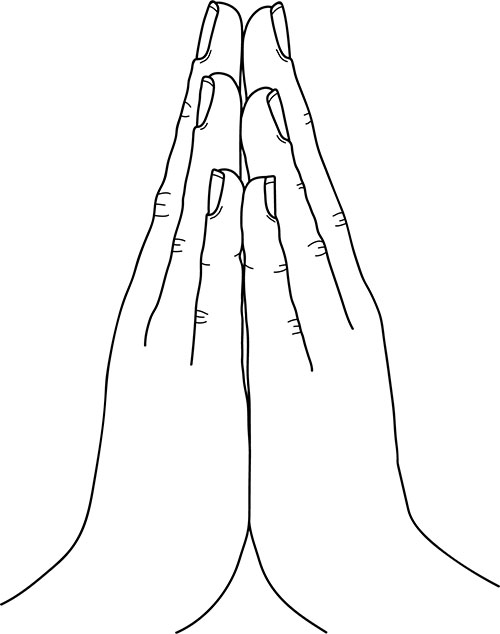
Many teachers end a yoga class by saying “namaste.” This means “The light in me honors the light in you.”
Sometimes, namaste is overused and misconstrued. Namaste does mean to honor someone. But in India, namaste means “hello” or “welcome.”
Typically, one says namaste with their hands in a prayer position.
Yin & Yang
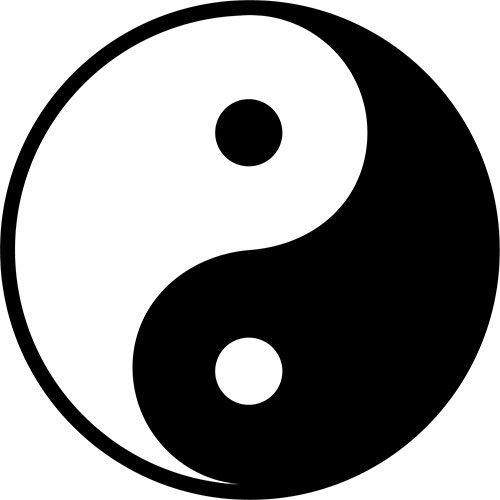
Yin and yang represent the masculine and the feminine. They are the light and the dark. They symbolize the law of polarity.
This symbol has been around since before the 3rd Century B.C. in China. Yin and yang is the idea of opposing forces. This sentiment is echoed in many cultures and philosophies.
Ultimately, yin and yang demonstrate balance. It signifies the inherent harmony of nature.
The Gyan Mudra
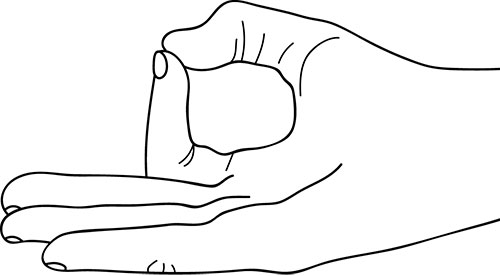
The Gyan mudra is the most common hand mudra used in yoga and meditation. It looks like the “ok” gesture we make with our hands.
Using this mudra while meditating can bring peace and calm.
The illustration of the mudra symbolizes a state of meditation. It signifies the attainment of inner peace. The Gyan mudra is also known as Jnana Mudra or Chin Mudra.
Image of Ganesh
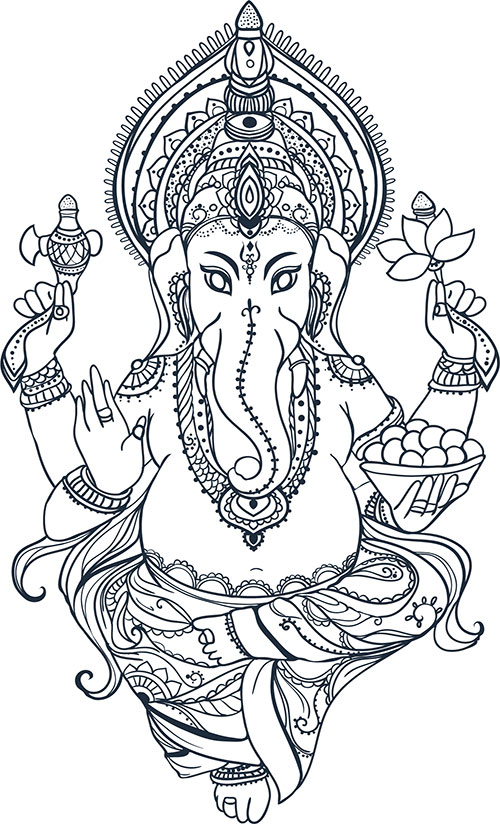
Ganesh is a very popular Hindu deity. He is always represented with the head of an elephant and the body of a man.
His image represents good luck, knowledge, and learning. This symbol will be invoked at the beginning of new endeavors.
Ultimately, the image of Ganesh is known as the remover of all obstacles.
Final Thoughts
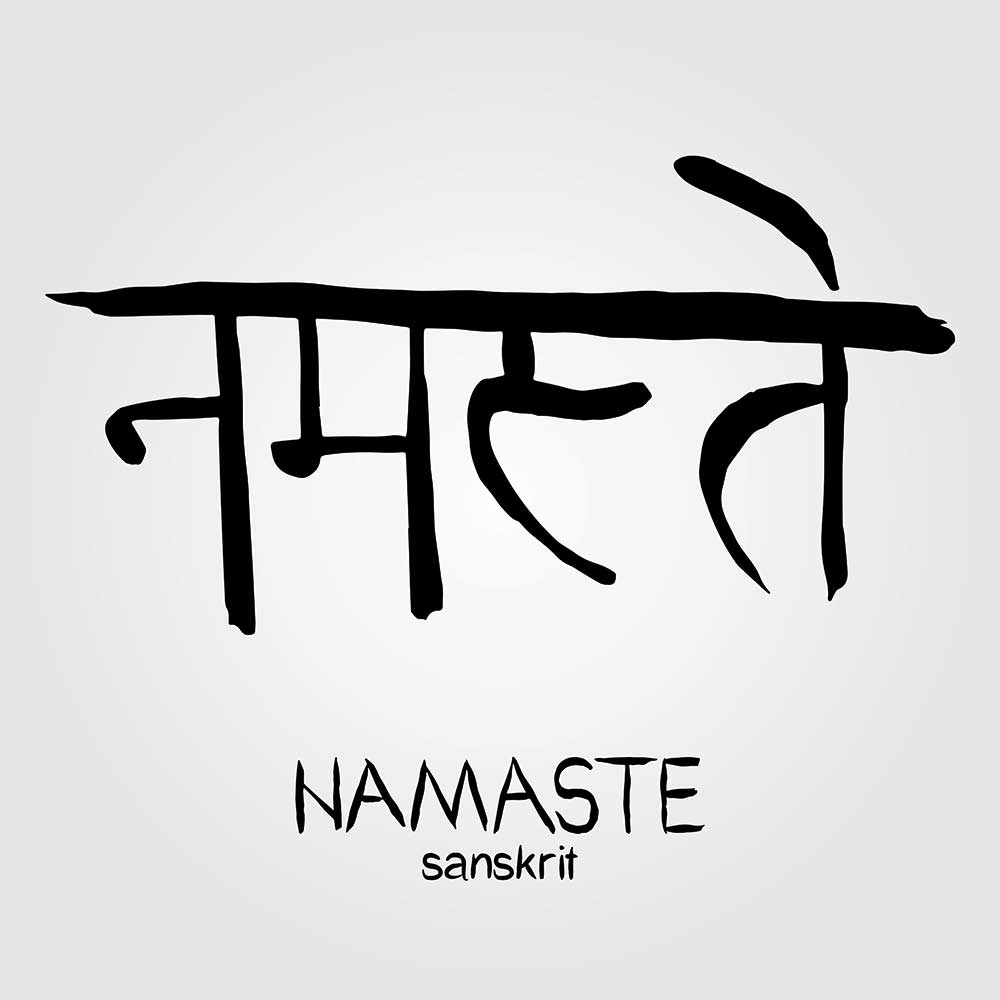
Yogic symbols can be used to enhance your yoga practice. Learning their histories will strengthen your connection to them.
Symbols allow for lessons to be captured in a single visual. They can boost concentration and one’s sense of inner peace. In your practice, allow symbols to communicate these deeper truths.
By having them closeby, you can be reminded of various yogic philosophies. These will strengthen not only your practice but your daily life. By incorporating symbols into your wardrobe, you can embody these philosophies and concepts.
Yoga is much more than physical activity. It is a philosophy of life. It is a way of living.
In this way, symbols can provide us a guide. Whenever we get lost or discouraged, we can use symbols to help guide us back.
Like setting an intention, symbols do not judge us for veering from the path. Instead, notice when you have shifted directions. Use symbols to help you achieve what you would like to manifest.
Let their power influence you.
And be open to all of the possibilities they have to offer.
What's Your Reaction?
As a trained yoga professional and Ayurvedic practitioner, Donna goes far beyond just writing about holistic concepts. With your health and wellness in mind, she happily provides an abundance of thoughtful and well-written information.






